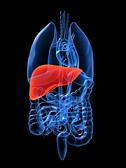Advertisment
EASL 2012 Report – Europe bears high costs of chronic liver diseases and high mortality in cirrhosis

by Bruce Sylvester – Two studies presented at EASL suggest the real human and economic costs of liver disease across Europe. The first focused on the financial cost of liver disease, and the second focused on high mortality rates associated with cirrhosis.
Researchers developed the Cost of Illness Study (COME) to evaluate economic costs for 1,088 patients over six months. Subject were diagnosed hepatitis C, cirrhosis, hepatitis B, hepatic carcinoma and other hepatic diseases (cholestasis, NASH etc.).
They reported that liver disease cost the EU on average at least €644.77 per patient per month. Hospitalizations cost 50.6% of monthly costs, and treatment accounted for 41.2% of costs. And patients and family caregivers lost an average of 1.15 days per patient per month of productivity.
In the opening press briefing of the congress, EASL Vice Secretary Professor Markus Peck-Radosavljeic, Associate Professor of Medicine at the Department of Gastroenterology and Hepatology at the Medizinische Universität in Vienna commented, “These results demonstrate the real life costs involved in the treatment and ongoing management of patients with liver disease. Liver disease is an increasing problem and having concrete information on the financial impact can help us plan our treatment strategies more effectively and more importantly, might engage health authorities more to invest into preventive action like reducing harmful alcohol consumption and fight obesity.”
The authors concluded that though treatment accounts for just over 40% of direct costs, efficient treatment is necessary to prevent both worsening of patient health and increases in direct and indirect financial costs.
In another study, researchers from the EASL-CLIF (Chronic Liver Failure) group sought to gain insight into ACLF, a poorly defined syndrome characterized by acute deterioration of cirrhosis, and a main cause of hospitalization and death. No diagnostic criteria and information on prevalence, pathogenesis or prognosis of ACLF have been developed. The investigators developed a new score (CLIF-SOFA, derived from the existing sequential organ failure assessment score) to assess the extent and severity organ failures.
They enrolled 1,379 patients, admitted to 29 hospitals due to complications of cirrhosis, in the observational, prospective European CANONIC study.
They reported reported a 35.5% 28-day mortality rate for Acute-on-Chronic liver failure (ACLF), based on results from the first 920 cases. Four grades of ACLF were identified:
ACLF-1: Renal failure or a non-renal organ failure associated with creatinine 1.5-2 mg/dL and/or grade I-II encephalopathy
ACLF-2: 2 organ failures
ACLF-3: 3 organ failures
ACLF-4: 4-6 organ failures
The overall prevalence of ACLF was 22.6%, with twenty-eight-day mortality of ACLF patients at 35.3% compared to 4.1% in patients without ACLF (85.7% in ACLF-4 patients).
ACLF often appeared in subjects with previously compensated (21%) or recently decompensated (< 3 months, 18%) cirrhosis, and it associated significantly with bacterial infections and active alcoholism, but not with gastrointestinal hemorrhage.
Hepatitis, TIPS, paracentesis without albumin and surgery were infrequent precipitating events, and for about 20% of cases no precipitating event could be identified.





